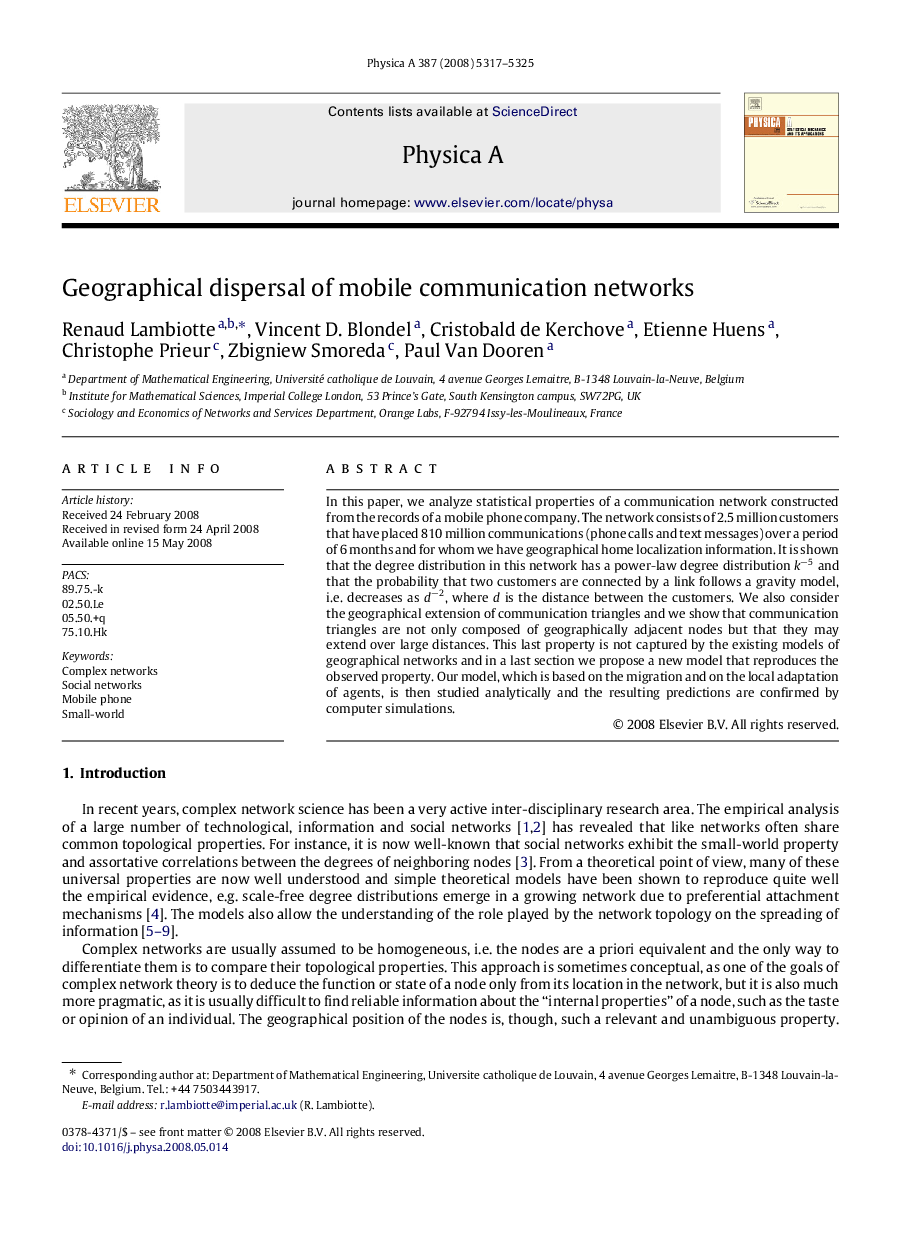| Article ID | Journal | Published Year | Pages | File Type |
|---|---|---|---|---|
| 977925 | Physica A: Statistical Mechanics and its Applications | 2008 | 9 Pages |
In this paper, we analyze statistical properties of a communication network constructed from the records of a mobile phone company. The network consists of 2.5 million customers that have placed 810 million communications (phone calls and text messages) over a period of 6 months and for whom we have geographical home localization information. It is shown that the degree distribution in this network has a power-law degree distribution k−5k−5 and that the probability that two customers are connected by a link follows a gravity model, i.e. decreases as d−2d−2, where dd is the distance between the customers. We also consider the geographical extension of communication triangles and we show that communication triangles are not only composed of geographically adjacent nodes but that they may extend over large distances. This last property is not captured by the existing models of geographical networks and in a last section we propose a new model that reproduces the observed property. Our model, which is based on the migration and on the local adaptation of agents, is then studied analytically and the resulting predictions are confirmed by computer simulations.
